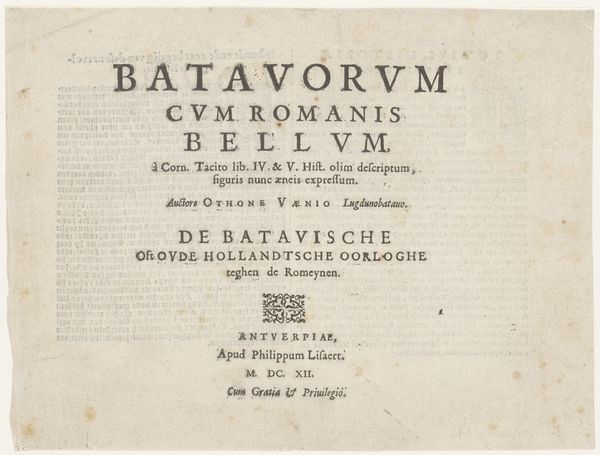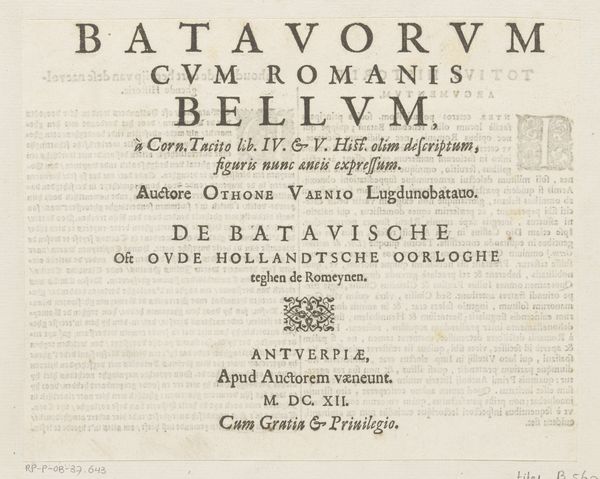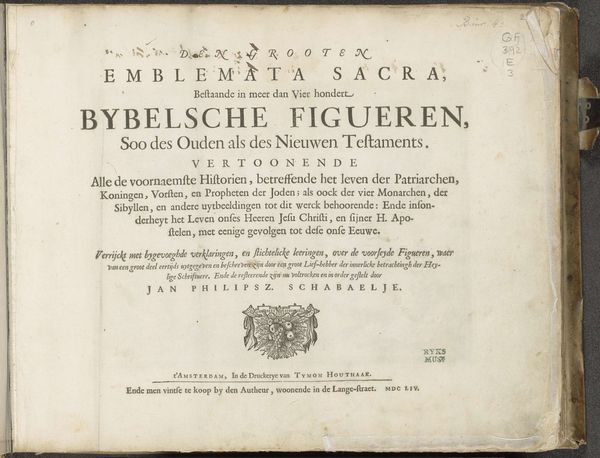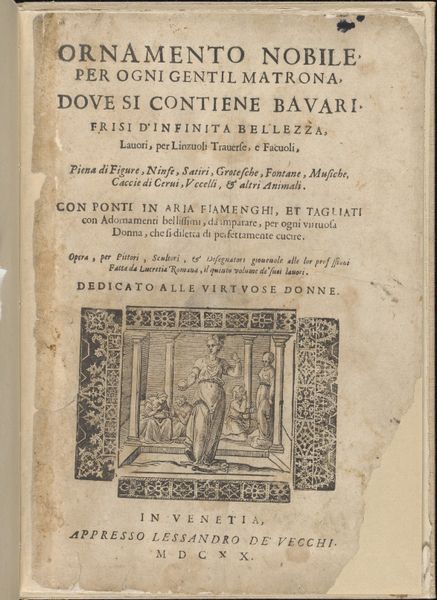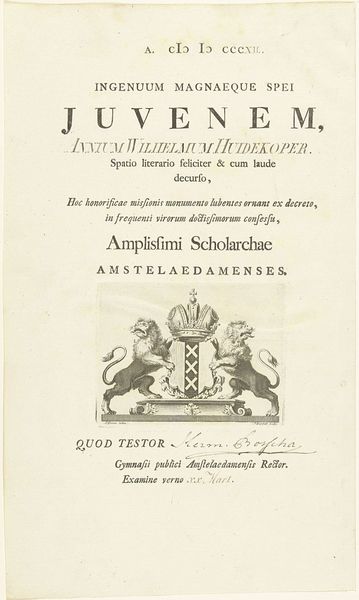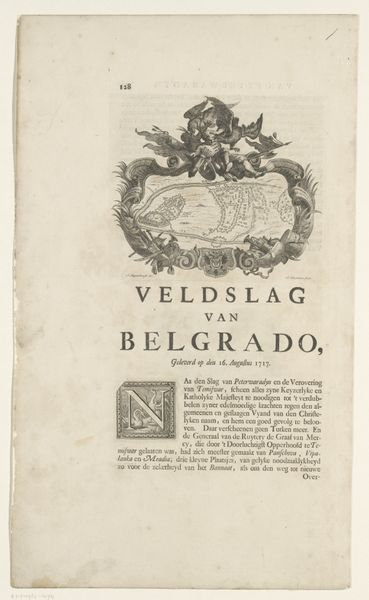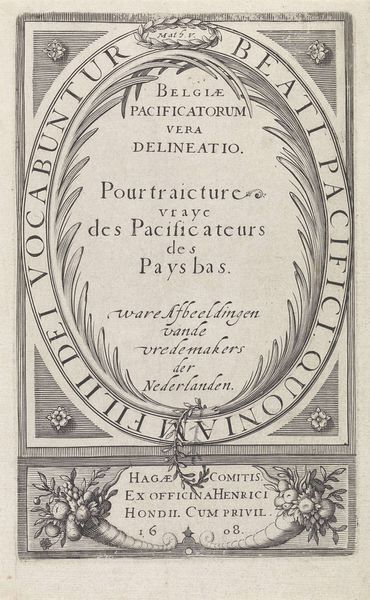
graphic-art, print, etching, typography, engraving
#
graphic-art
# print
#
etching
#
typography
#
northern-renaissance
#
engraving
Dimensions: height 214 mm, width 294 mm
Copyright: Rijks Museum: Open Domain
Curator: This is the title page for the series 'De Bataafse Opstand, 69-70' by Otto van Veen, created in 1612. It’s a fascinating example of early 17th-century printmaking, combining etching and engraving with typography. It resides here at the Rijksmuseum. Editor: It feels incredibly direct for a historical document. Stark, almost. All text, demanding your attention. You immediately grasp that it’s about conflict. It gives me the impression that the creation of it was intended for widespread availability rather than something precious and ornate. Curator: Absolutely. Van Veen's choice of presenting the subject this way underscores the political climate of the time. The Batavian Revolt held significant resonance as a historical parallel for the Dutch struggle for independence from Spain. This was a means of connecting present battles to a noble past, fostering national identity. Editor: It is interesting how the various fonts used add to the hierarchy, isn’t it? It seems like even the letter forms were commodities and a material decision like size contributes to where you are guided as a viewer. One could ask what type of ink was used and what was the process for creating the typeface? These choices are never neutral. Curator: The craftsmanship indeed serves the narrative. Dissemination was key. The combination of etching and engraving techniques suggests a level of efficiency and reproducibility, enabling Van Veen to reach a broader audience. Editor: Consider too, that producing these prints would've involved workshops, labor divisions, and economic exchanges. How was this labor organized and who benefitted beyond the artist, or was this something mostly sold and consumed within an aristocratic circle? I am keen on how the mode of production affects its meaning. Curator: These are compelling material points, reminding us that artistic creations are intrinsically connected to socio-economic realities and political agendas. Editor: Precisely. Analyzing art requires us to look at those interconnections as being central and revealing of power dynamics. This changes the image completely if we stop thinking about style, and start examining production. Curator: Looking beyond just its historical significance, understanding art involves thinking about it as material object and also appreciating the environment from which it sprung, it seems. Editor: Agreed, and it enriches our appreciation by looking at artistic endeavors, even ones like this, not simply through an aesthetic appreciation.
Comments
No comments
Be the first to comment and join the conversation on the ultimate creative platform.
